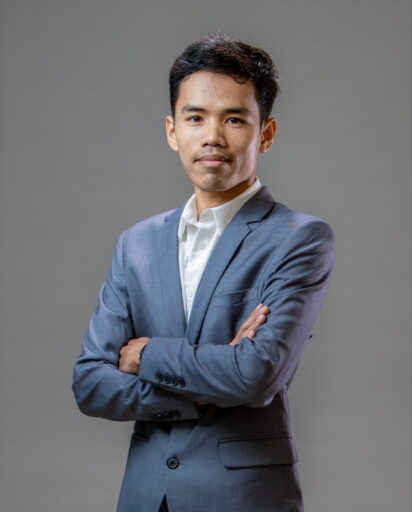PhD Student in Civil Engineering

I am an experienced structural design engineer and current PhD scholarship student (SUPRA awardee) at Swinburne University of Technology in Melbourne, Australia. With over four years of experience in project management and structural engineering roles, I have worked on significant projects in Cambodia, including high-rise condominiums, water treatment plants and water production facilities. Currently, I am also a sessional tutor at Swinburne.
My academic journey has been supported by scholarships, including a full scholarship for my master degree at Tianjin University in China, awarded by the Chinese government, as well as a scholarship for my bachelor degree from Paragon International University in Cambodia.
Swinburne University of Technology
A/Prof. Dr Jessey Lee
I’m working on the tensile performance of fastenings in geopolymer concrete (GPC) as part of a SmartCrete CRC-supported project. I’m investigating the behaviour of anchors under tensile load through pull-out testing, with the aim of enhancing the structural integrity and sustainability of fastening systems in the developed low-carbon concrete materials. As part of this work, I need to develop ambient-cured, eco-friendly one-part GPC using industrial by-products like fly ash and slag.
The project supports the broader adoption of GPC and helps anchor manufacturers refine their products for better compatibility with this sustainable material. The findings of the research are expected to be published in industry technical guidelines which will feed into the Australian Standard for fastening into concrete AS 5216.
With a solid background in structural engineering, I aim to bridge the gap between real-world challenges with academic research. My experience in large-scale construction revealed the need for sustainable materials to reduce carbon emissions. I think I could contribute to advancements that can be directly implemented in the industry.
I have successfully developed low-carbon GPC mix for my anchor pull-out tests. I have casted several slabs and tested some anchor to evaluate their behaviour subjected to tensile loading. The experimental results were compared to existing prediction model. A preliminary conclusion was drawn based on the test results.
Honestly, I will be flexible depending on the opportunities that arise. However, I want to work in a place where I can apply my research skills to develop and offer sustainable concrete products to customers. Alternatively, I am also open to pursuing a career in academia as a research fellow or postdoctoral researcher. This path would allow me to continue contributing to research outputs and mentoring the next generation of engineers.
The findings of my project will promote a broader adoption of eco-friendly GPC in the construction sector.
Notifications